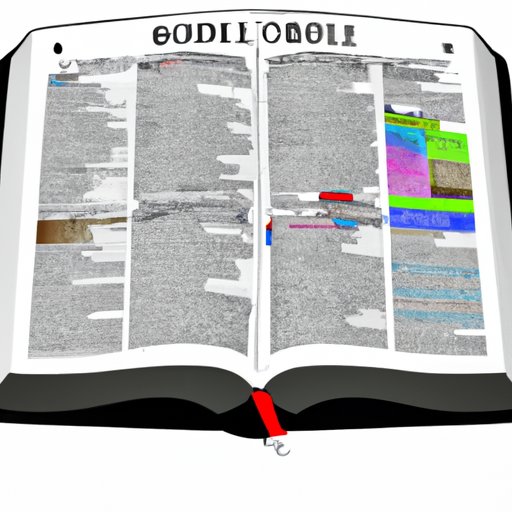Introduction
The Bible is widely considered to be one of the most important texts in human history. It has been translated into hundreds of languages and is a source of inspiration for millions of people around the world. However, with so many versions and translations of the Bible available, it can be difficult to discern which is the most accurate.
This article aims to provide a comprehensive guide to the most accurate version of the Bible by exploring the accuracy of biblical texts and assessing the quality and accuracy of modern translations. By examining the historical reliability of biblical translations, this article seeks to identify the closest rendition of the original text.
A Comparative Analysis of Different Versions of the Bible
In order to accurately compare different versions of the Bible, it is first necessary to examine the accuracy of the biblical texts themselves. Many scholars believe that the original manuscripts of the Bible were written in Hebrew, Aramaic and Greek, yet these manuscripts have not survived intact. As such, today’s versions of the Bible are based on translations from ancient texts.
When looking at the accuracy of these translations, it is important to consider the time period in which they were produced. For example, some of the earliest versions of the Bible, such as the Septuagint, were produced during the third century BC. The accuracy of these translations is therefore limited by the resources and technology available at the time.
In addition, when assessing the accuracy of biblical texts, it is also important to consider how closely they reflect the original language. For instance, while some translations may be more literal, others may be more interpretive. This can lead to discrepancies between different versions of the Bible.

An Overview of the Most Accurate Version of the Bible
When searching for the most accurate version of the Bible, one of the best places to begin is with modern translations. In recent years, scholars have used advances in technology and access to ancient texts to produce highly accurate translations of the Bible. These translations often incorporate the latest research and offer readers a more literal interpretation of the original text.
One example of a highly accurate modern translation is the English Standard Version (ESV). This translation was produced using the original biblical languages and is considered to be the closest rendition of the original text. The ESV is also renowned for its accuracy and readability, making it an ideal choice for those seeking an accurate version of the Bible.
Other translations, such as the New American Standard Bible (NASB) and the New International Version (NIV), also offer readers an accurate version of the Bible. While each of these translations offers a slightly different interpretation of the original text, they all strive to remain faithful to the original language.
Conclusion
In conclusion, the most accurate version of the Bible depends on the reader’s needs and preferences. When searching for an accurate translation, modern translations such as the ESV, NASB and NIV should be considered. These translations offer readers a more literal interpretation of the original text and are considered to be the closest rendition of the original language.
Ultimately, the decision as to which version of the Bible is the most accurate is a personal one. As such, readers should take the time to explore different translations and decide which one best suits their needs.


